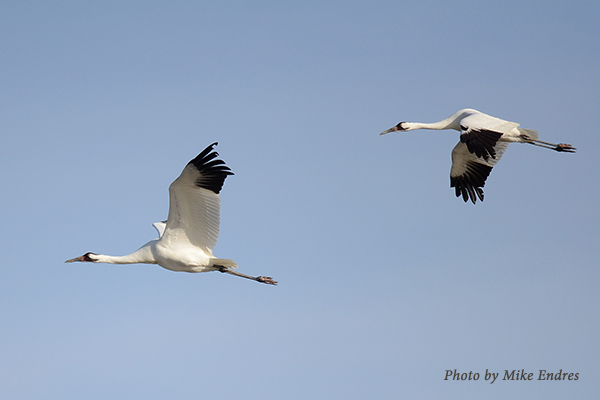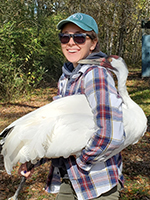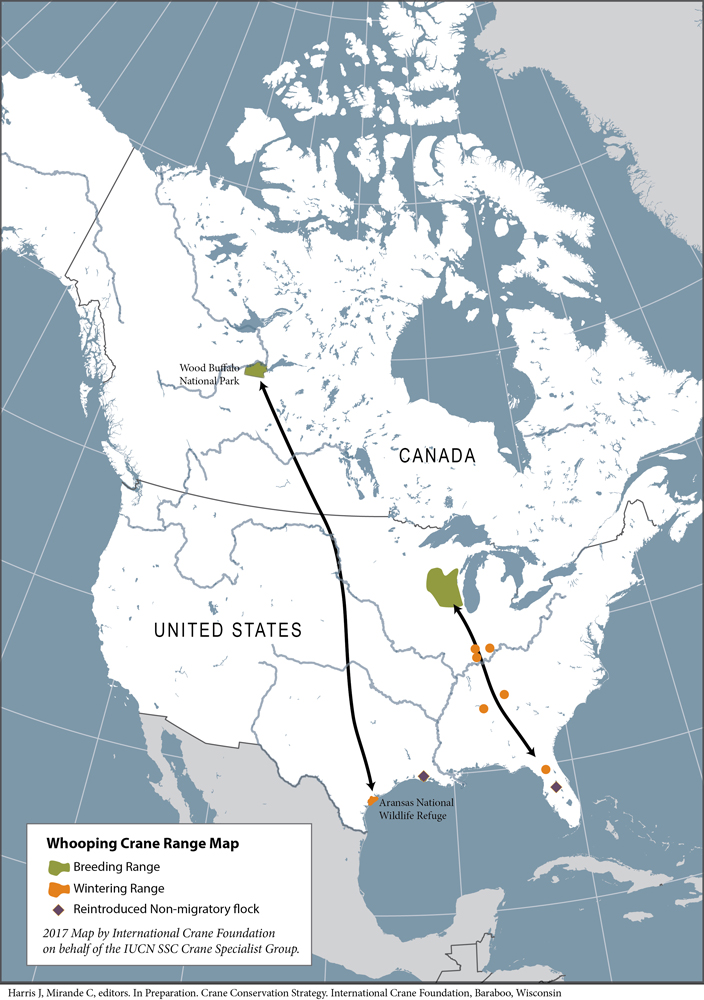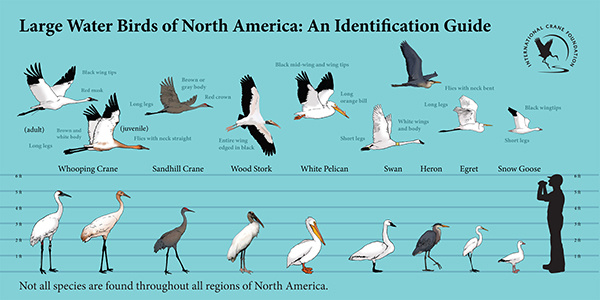
Only 20 Whooping Cranes remained in North America in the 1940s due to unregulated hunting, massive wetland drainage and feather collecting for the millinery trade. Today, in 2022, over 650 Whooping Cranes live in the wild across two flyways and two non-migratory populations. We credit this population growth to the dedicated efforts of many conservation partners who have sought to rebuild the fragile populations and protect the habitats on which these birds rely.
One of the migratory populations we see today is the Eastern Migratory Population, which was reintroduced to the eastern United States in 2001. This population of around 80 wild Whooping Cranes breeds in Wisconsin and winters to the south, including Jasper-Pulaski and Goose Pond Wildlife Areas in Indiana, Hiwassee Wildlife Refuge in Tennessee and Wheeler National Wildlife Refuge in Alabama. This population began its spring migration back to Wisconsin in the past month to begin breeding and raising chicks.
In the Eastern Migratory Whooping Crane Population spring migration typically occurs between late February and April. An individual bird’s migration can last anywhere from one day to a couple weeks depending on how far they need to travel back to Wisconsin.
Migration can be an incredibly tiring process. During the day, Whooping Cranes fly north by riding thermals, or upward currents of warm air, which propel them forward and help conserve their energy. Whooping Cranes do not migrate at night, so birds who do not complete the migration in one day will make stops along the way. These stops can be for one night to rest and refuel. Or, if a bird needs to rest longer or wait for more favorable weather conditions, it may stop longer.
While at these stops, called staging areas, Whooping Cranes will use wetlands or agricultural fields available to them on the midwestern landscape. Whooping Cranes are omnivores. Their diet consists of grains, seeds, invertebrates, snakes, frogs and rodents found in these habitats. At night the birds move to areas with water, such as wetlands or riverbanks, which provide additional food, water and safety from predators.
Sandhill Cranes, commonly found throughout North America, often migrate with Whooping Cranes. While Sandhill Cranes congregate in a flock for migration, Whooping Cranes migrate as a pair or a family unit.
When Whooping Cranes in the eastern migratory population return to Wisconsin, they most frequently return to Necedah and Horicon National Wildlife Refuges to set up territories, breed and build nests in preparation for raising a chick in the summer. To view Whooping Cranes in Wisconsin, we encourage you to visit Necedah and Horicon National Wildlife Refuges and follow these crane-safe behaviors:
• Stay 200 meters away from cranes at all times.
• Understand their behaviors – head up and wings back mean take a step back!
• Respect private property and only park in designated areas to view Whooping Cranes.
• Report all Whooping Crane harassment, disturbance or poaching to 1-800-TIP-DNR.
• Report banded Whooping Cranes to bandedcranes.org.
• Share only the county and state where you see a Whooping Crane.
• Contact your legislators to ask them to support the conservation and protection of wetlands.
Whooping Cranes were once on the brink of extinction and continue to face threats as their populations slowly rebuild. Seeing a Whooping Crane on the landscape is a sign of conservation measures working and is very exciting. We encourage you to be excited about Whooping Cranes in your community and share with your friends, family and neighbors. Let them know Whooping Cranes may be migrating through or nesting in your community this spring!
 Story submitted by Stephanie Schmidt, Whooping Crane Outreach Coordinator. Click here to learn more about our work in North America.
Story submitted by Stephanie Schmidt, Whooping Crane Outreach Coordinator. Click here to learn more about our work in North America.


